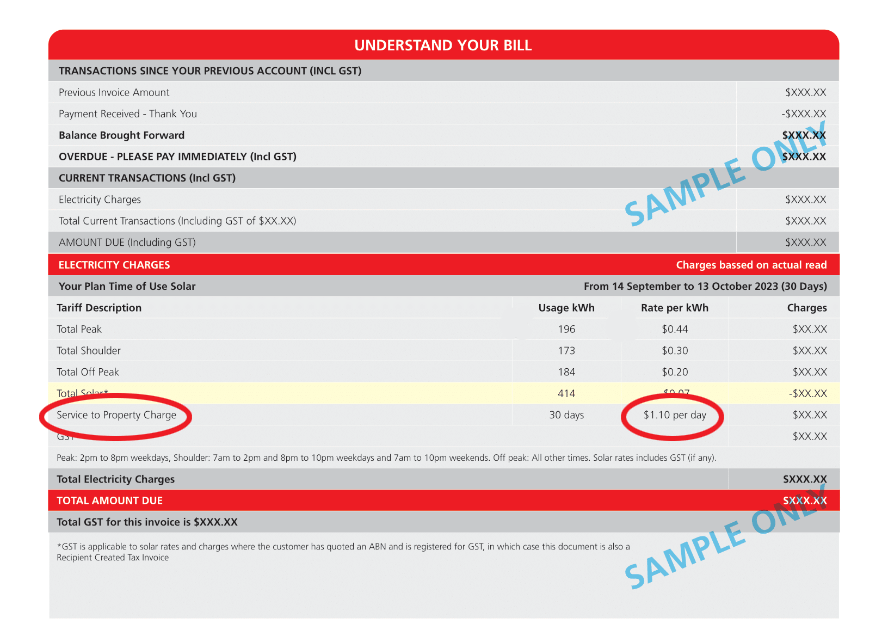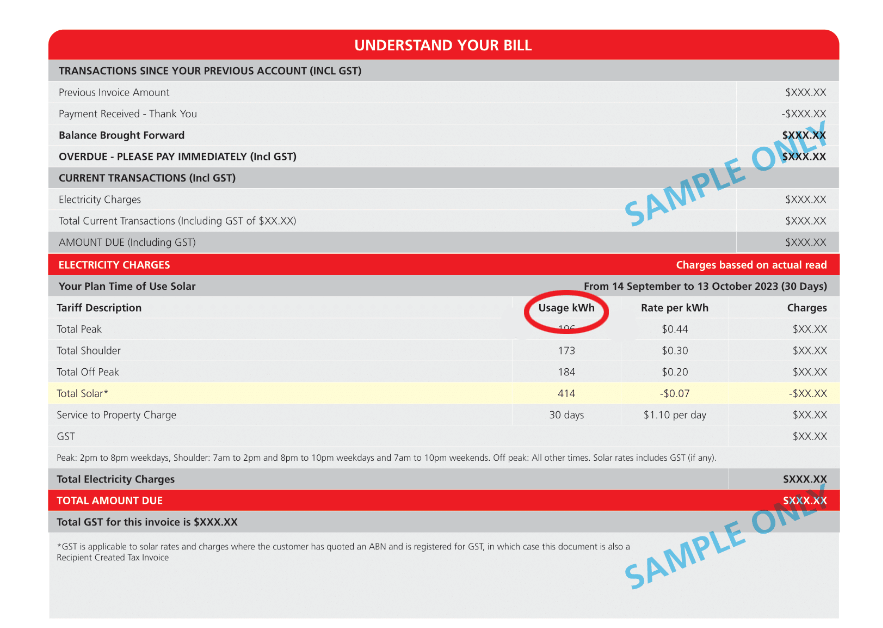KEY POINTS
- A tariff describes how customers are charged for electricity usage by their retailer.
- Tariff availability is dependent on where customers live — Southeast or regional Queensland.
- Energy prices in Southeast Queensland are deregulated, with regional Queensland remaining regulated.
Since retail electricity prices were deregulated in 2016, South East Queensland has experienced a surge in competition. With more than 20 energy retailers open for business in the Sunshine State, it’s no wonder Queenslanders aren’t settling for less when it comes to paying for power. Yet, with so many deals on offer how do you know which plans have cheap electricity rates?
Behind any discount, promotional offer or sign-up credit, the base energy plan rates will generally have the biggest impact on bills. This is why diving a little deeper into the fine print is worthwhile, otherwise what looked like a good deal on paper could end up being a dud once the first bill arrives. In this article, we list usage and supply rates from retailers currently operating in Brisbane on the Energex network. Use our comparison tool below for specific rates in your area.
Compare cheap electricity plans in Queensland
Here are some sponsored deals from the retailers on our database that include a link to the retailer’s website for further details. These are products from our referral partners†. These costs are based on the Energex network in Brisbane but prices may vary depending on your circumstances. This comparison assumes general energy usage of 4600kWh/year for a residential customer on a single rate tariff. Please use our comparison tool for a specific comparison in your area and to see other products in our database that may be available. Our database may not cover all deals in your area. As always, check all details of any plan directly with the retailer before making a purchase decision.
 |
|
9% Less than reference price |
$1,888 Price/year (estimated) |
Go to Site |
Here are some of the cheapest published deals from the retailers on our database that include a link to the retailer’s website for further details. These are products from referral partners†. These costs are based on the Energex network in Brisbane but prices may vary depending on your circumstances. This comparison assumes general energy usage of 4600kWh/year for a residential customer on a single rate tariff. Please use our comparison tool for a specific comparison in your area and to see other products in our database that may be available. Our database may not cover all deals in your area. As always, check all details of any plan directly with the retailer before making a purchase decision.
What is an electricity tariff?
A tariff is the term used to describe how customers are charged for electricity usage. Almost all electricity tariffs are split into two main costs: the variable usage cost and fixed daily cost for being connected to the grid, commonly known as the ‘usage rate’ and ‘supply charge’.
Depending on the tariff a household or business is on the number of usage rate charges may differ, with some having up to three different rates throughout the day. There are also further tariff options, called primary or secondary tariffs. A primary tariff refers to the standard household electricity tariff, which is applicable to all appliances in the home. A secondary tariff refers to an optional tariff that manages a separate metering charge for high-usage appliances.
What electricity tariffs are there in Queensland?
Electricity tariffs available in Queensland will change depending on your location. This is because they are determined by electricity distributors (the companies responsible for building and maintaining the power poles and lines). Australian states all have different distributors, with Queensland having two: Energex and Ergon Energy.
Energex services South East Queensland, spanning from the New South Wales border west to Toowoomba and north to Gympie while Ergon Energy is the regional distributor, supplying most other areas across the state.
Generally, you can expect both distributors will at least offer the choice between a single rate or flexible pricing tariff. However, these networks may diversify offerings depending on the area it services.
Electricity tariffs in South East Queensland
Households in South East Queensland (SEQ) can generally choose from four residential electricity tariffs, some of which can be combined for use with another tariff in the selection. These tariffs are as follows:
- Single rate: The standard tariff available to all households only charges one flat cost for usage, regardless of the time of day. A standard daily supply fee is also applicable.
- Time of use: This flexible pricing tariff changes the cost charged for usage depending on the time of day. Three charges typically exist on this tariff: Peak, off-peak and shoulder. Peak is the highest, followed by shoulder costs, with off-peak as the cheapest. A standard daily supply fee is also applicable.
- Demand: This tariff incorporates a third cost, known as the demand charge, that reflects the maximum electricity usage of a household over a period in the evening. This maximum usage is then calculated against the demand charge amount and added to the power bill as a daily cost, alongside the standard usage rate and supply charge. The usage amount for demand charges resets every month based on the maximum usage recorded.
- Controlled load: Also known as an economy or super economy tariff, this is a secondary tariff option that allows for separate metering for high-usage appliances such as hot water systems or pool pumps. With a controlled load tariff, the designated load is generally only powered for a limited period of the day, e.g. 9am to 3pm, and is done so at a lower usage rate than that charged for the rest of the property’s energy usage. This charge is added to the power bill alongside the standard usage rate and supply charge for energy usage around the rest of the house. Some controlled load tariffs may also charge a separate daily supply rate.
As mentioned above, some households may be eligible to combine certain time of use and demand charge tariffs together. Eligibility for these kinds of tariffs typically relies on the household having a smart meter installed at the property.
With SEQ having both competition and price deregulation in the energy market, the costs charged on these tariffs may greatly differ depending on the energy provider a household chooses. Naming conventions may also differ from retailer to retailer when choosing a tariff and plan. As such, be sure to compare a range of offers and read the fine print before making a purchase decision. If in doubt, phone the energy provider and ask for further details.
Compare single rate electricity plans available in South East Queensland
Here are some of the cheapest published deals from the retailers on our database that include a link to the retailer’s website for further details. These are products from referral partners†. These costs are based on the Energex network in Brisbane but prices may vary depending on your circumstances. This comparison assumes general energy usage of 4600kWh/year for a residential customer on a single rate tariff. Please use our comparison tool for a specific comparison in your area and to see other products in our database that may be available. Our database may not cover all deals in your area. As always, check all details of any plan directly with the retailer before making a purchase decision. The next three tabs feature products exclusively from AGL, EnergyAustralia and Origin.
Here are the AGL Energy plans on our database for SEQ. These are products from a referral partner†. These costs are based on the Energex energy network in Brisbane but prices may vary depending on your circumstances. This comparison assumes general energy usage of 4600kWh/year for a residential customer on a single rate tariff. Please use our comparison tool for a specific comparison in your area and to see other products in our database that may be available. Our database may not cover all deals in your area. As always, check all details of any plan directly with the retailer before making a purchase decision.
Here are the EnergyAustralia plans on our database for SEQ. These are products from a referral partner†. These costs are based on the Energex network in Brisbane but prices may vary depending on your circumstances. This comparison assumes general energy usage of 4600kWh/year for a residential customer on a single rate tariff. Please use our comparison tool for a specific comparison in your area and to see other products in our database that may be available. Our database may not cover all deals in your area. As always, check all details of any plan directly with the retailer before making a purchase decision.
Here are the Origin Energy plans on our database for SEQ. These are products from a referral partner†. These costs are based on the Energex network in Brisbane but prices may vary depending on your circumstances. This comparison assumes general energy usage of 4600kWh/year for a residential customer on a single rate tariff. Please use our comparison tool for a specific comparison in your area and to see other products in our database that may be available. Our database may not cover all deals in your area. As always, check all details of any plan directly with the retailer before making a purchase decision.
Electricity tariffs in regional Queensland
Regional QLD has a similar selection of tariffs as those offered in SEQ. The main difference lies in the pricing and availability of tariffs. Currently, households in regional QLD have access to the following electricity tariffs:
- Single rate (tariff 11): Most households are on this flat rate tariff.
- Time of use (tariff 12B): This flexible pricing tariff has higher rates during peak and shoulder periods (evening) and cheaper rates in off-peak times (daytime).
- Solar soaker (tariff 12C): This time of use tariff is designed to help households make the most of daytime energy usage. Peak rates are higher in the evening to encourage load shifting.
- Transitional demand (tariff 14A): This is also known as an introductory demand tariff with lower demand rates but higher general usage rates.
- Demand (tariff 14B): This is a standard demand tariff.
- Economy (tariff 31 and tariff 33): These tariffs help manage high usage appliance loads. Tariff 31 is claimed to be better suited to large hot water systems while tariff 33 is ideal for hot water systems and pool pumps. This is a secondary tariff that should be used in conjunction with a primary tariff such as a single rate (tariff 11).
Similar to SEQ, households may also be eligible to combine certain tariffs if they have a smart meter installed.
However unlike SEQ, the regional QLD energy market still operates with pricing regulation in place. This means the Queensland Competition Authority (QCA) sets rates to be charged by all providers on the Ergon Energy network. Because of this, households in regional QLD only have access to one price for each tariff option and limited choices (if any) when it comes to electricity providers in the area.
For this reason, Ergon Energy tends to service the vast majority of households in regional QLD for electricity. Below we have listed the usage rate charges available on Ergon Energy’s website for the tariffs listed above.
| Tariff Type | Usage charges |
|---|---|
| Single Rate (11) | 34.0692c/kWh |
| Time of Use (12B) | Peak: 43.6513c/kWh Shoulder: 30.1246c/kWh Off-peak: 27.5561c/kWh |
| Solar Soaker (12C) | Peak: 54.1178c/kWh Shoulder: 29.1093c/kWh Off-peak: 14.69054c/kWh |
| Transitional Demand (14A) | Demand: $5.9818/kW General Usage: 27.5781c/kWh |
| Demand (14B) | Demand: $10.4984/kW General Usage: 26.6849c/kWh |
| Economy (31) | 18.9442c/kWh |
| Economy (33) | 21.1035c/kWh |
Source: Ergon Energy. Prices are inclusive of GST. Rates are effective as of 10 September 2024.
Business electricity tariffs in Queensland
Businesses across QLD generally have access to the same selection of tariffs as those available to residential customers. The main difference between these options and those offered to households are the costs. Eligibility criteria may also differ for the demand, economy or flexible pricing tariffs.
For more information regarding business electricity tariffs contact Energex or Ergon Energy.
Which Queensland electricity tariff is right for me?
The right electricity tariff for your household will ultimately depend on your energy usage habits and amounts. Most households are likely to be on a single rate tariff, which is by far the easiest tariff to keep track of, since rates don’t differ throughout the day. However, a single rate tariff can prevent households from tapping into cheaper usage rates for doing things such as load shifting or investing in solar energy.
If you have the capacity to change your energy habits, utilise solar power technologies or invest in a smart meter and usage monitoring system. You could find some value in a flexible pricing tariff. Similarly, if you have high-usage appliances on your property, a controlled load tariff could help negate some of these costs.
For some households in Queensland switching tariffs could mean spending money on energy upgrades, while for others it could be as easy as flicking a switch. If you aren’t sure whether a change in tariff could benefit your energy bill then it may be best to reach out to your provider and see if they can offer advice.
Electricity rates QLD
Here are general usage rates and daily supply charges for customers in SEQ. Electricity rates are based on residential customers in Brisbane on the Energex network. We list rates of the cheapest published deal available on our database from each retailer for single rate tariffs only.
| Electricity Provider | Electricity Plan | General Usage Rate | Daily Supply Charge | |
|---|---|---|---|---|
| AGL | Residential Value Saver – New to AGL | 32.20¢/kWh | 131.71¢/day | |
| Alinta Energy | HomeSaver Advantage – Single Rate | 28.53¢/kWh | 110.18¢/day | |
| Amber Electric | Amber Plan – Variable Wholesale Prices | 41.27¢/kWh | 112.23¢/kWh | |
| Ampol Energy | Powering On | 25.74¢/kWh | 119.35¢/kWh | |
| CovaU | Freedom | 31.90¢/kWh | 120.69¢/day | |
| Diamond Energy | Everyday Renewable Saver | 34.06¢/kWh | 119.90¢/day | |
| Dodo | Market Offer | 29.11¢/kWh | 121.76¢/day | |
| EnergyAustralia | Flexi Plan | 34.93¢/kWh | 125.84¢/day | |
| Energy Locals | Online Member | 28.50¢/kWh | 92.00¢/day | |
| Engie | Engie Perks | 35.49¢/kWh | 114.94¢/day | |
| GloBird Energy | GloSave Residential | 35.75¢/kWh | 114.40¢/day | |
| Kogan Energy | Kogan Energy With Free First | 26.66¢/kWh | 112.92¢/day | |
| Momentum Energy | Nothing Fancy Electricity | 25.30¢/kWh | 119.24¢/day | |
| Nectr | 100% Clean | 34.43¢/kWh | 132.00¢/day | |
| Origin Energy | Go Variable | 32.26¢/kWh | 131.13¢/day | |
| OVO Energy | The One Plan | 27.17¢/kWh | 93.50¢/day | |
| Pacific Blue | Blue Home | 33.55¢/kWh | 129.25¢/day | |
| Powershop | Switch Saver | 28.98¢/kWh | 122.72¢/day | |
| Red Energy | Qantas Red Saver | 29.72¢/kWh | 115.41¢/day | |
| Sumo | Sumo Switch | 27.39¢/kWh | 92.84¢/day | |
| Tango Energy | Home Select | 33.55¢/kWh | 129.25¢/day | |
| 1st Energy | 1st Saver | 33.66¢/kWh | 137.50¢/day | |
| Basic Plan Information Documents | ||||
Rates and products are subject to change. Accurate as of March 2025.
Electricity usage costs (per kWh) in QLD
As the name suggests usage costs refer to the energy rates you pay for using power in your home. Electricity usage charges are calculated in kilowatt hours (kWh), and depending on the plan, will be between 25c/kWh and 30c/kWh in Queensland. Usage charges are generally the largest component of your energy bill, especially if your household consumes a lot of power.
Where are usage rates found on a bill?
Electricity usage rates are usually located in the breakdown or summary of your energy bill. Keep in mind that some retailers call usage charges by a different name, such as ‘peak usage’ or ‘anytime usage’.
Electricity supply costs in QLD
Electricity supply charges refer to the cost of power being supplied to your home. These costs are a fixed fee and tend to sit around 90c to $1.20 a day, which can add up over a monthly or quarterly billing cycle. This is why it’s a good idea to check supply rates of any plan before signing up.
Where are supply charges found on a bill?
Like usage costs, supply rates are normally found in the breakdown of charges on your bill. The example below calls this rate the ‘service to property charge’, but remember that other retailers may call it something else like a ‘fixed daily charge’.

What about energy rates in regional QLD?
What sets Queensland apart from the rest is that only the south east is deregulated, while energy prices in regional QLD are regulated. This means residential customers outside of SEQ are unable to choose their energy provider and will likely be connected to Ergon Energy.
Living in regional or far north QLD? See the power rates you can expect to pay in our regional QLD energy pricing guide.
How to find a plan with cheap energy rates in QLD
Energy customers in SEQ have plenty of choices when it comes to picking a retailer, many of which offer cheap electricity rates. Just be sure to check all the details of a plan before signing up. That way you’ll be in a position to find a deal that’s suitable to your household’s needs. Rather than scanning multiple retailer websites, jump into our comparison tool and start comparing a range of prices and products side by side.
Original reporting by Simon Downes
Image Source: Richie Chan/Shutterstock.com




Share this article